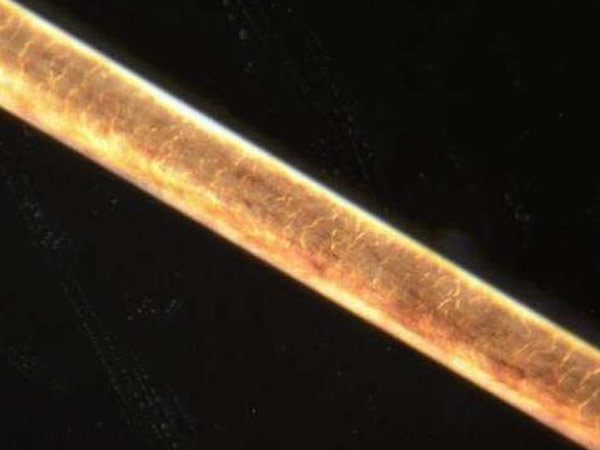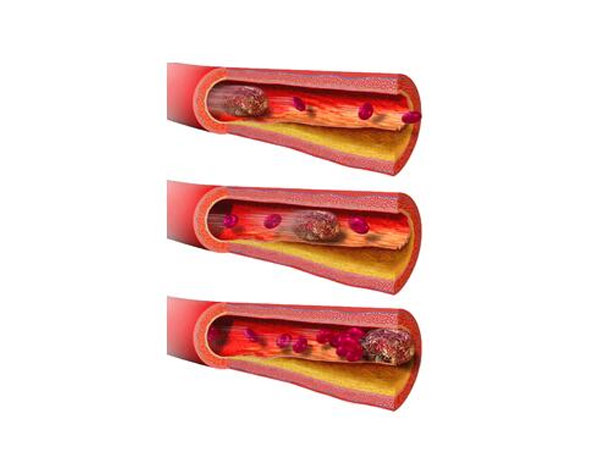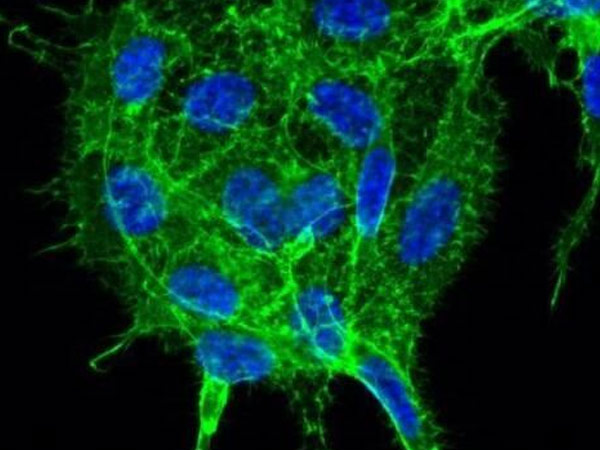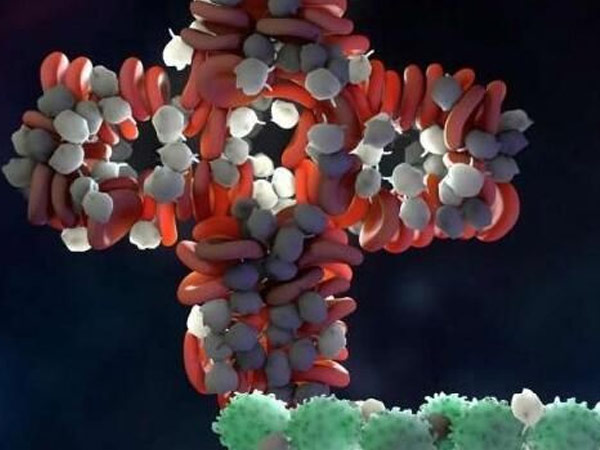
Top 10 must-see heavyweight research in May
- Categories:Industry news
- Author:
- Origin:
- Time of issue:2018-09-28 23:36
- Views:
(Summary description) [1] Mol Ther: Heavy! Scientists successfully use CRISPR/Cas9 to eliminate HIV-1 infection in live animals doi: 10.1016/j.ymthe.2017.03.012 Because the virus can hide in the underlying virus reservoir, the hope of a complete cure for HIV infection is still very slim. Recently, in a study published in the international journal Molecular Therapy, researchers from Temple University and the University of Pittsburgh The combined study found that they were able to remove HIV DNA from the genome of living animals to eliminate late HIV infection, and the researchers achieved this "feat" for the first time in three different animal models, including human Induced mouse model (transplanted into human immune cells) and virus-infected mouse model, etc. In the article, the researchers found for the first time that the use of "gene magic scissors" CRISPR/Cas9 can completely shut down the replication of HIV-1 and eliminate the virus in infected cells of animals. The study builds on a 2016 proof-of-concept study conducted by researchers using genetically modified rat and mouse models in which HIV-1 DNA was incorporated into the genome of every tissue in the animal model; It was found that this strategy was able to remove HIV-1-targeted segments from the genomes of most tissues in the experimental animals. [2] Genes Dev: Scientists find potential cells and genes that lead to less whiteheads and baldness doi: 10.1101/gad.298703.117 Researchers from Southwestern Medical Center have recently discovered cells that directly form hair and uncovered the mechanism that causes graying of hair. These findings may help find a treatment for baldness and graying of hair. "This project started out to study the process of tumor formation, but we ended up discovering why hair turns gray and identifying cells that directly form hair. With this knowledge, we hope to develop a therapeutic drug in the future. Or a safe treatment to deliver the genes necessary for the hair follicle to the cells to correct the errors that occur in the cells," said Professor Lu Le, author of the paper. The researchers found that a protein called KROX20 turns on expression in skin cells that can form hair shafts. These progenitor cells produce another protein called stem cell factor (SCF), which is important for hair color. When the researchers deleted the SCF gene in the progenitor cells of a mouse model, the mice's hair turned white. If the KROX20-expressing cells were removed, hair would not grow, and the mice developed alopecia areata. [3] Nat Med: Human rejuvenation is expected to be realized! Scientists have found that marijuana may reverse human brain aging doi: 10.1038/nm.4311 Memory declines with age; in a recent study published in Nature Medicine, researchers from the University of Bonn and the Hebrew University of Jerusalem found through a joint study that marijuana can reverse the aging process of the brain , researchers found that after long-term low-dose treatment with cannabis active ingredients, the state of old mice can return to the state of being born at two months, which may be for later researchers to develop new treatments for brain diseases such as dementia Offers new clues and hope. Like other organs in the body, our brains also age, and ultimately our cognitive abilities decline with age, and it's worth noting that as we age, it's harder to remember new things at the same time Or focusing on multiple things at once, a normal process that can lead to dementia, so researchers have been trying to find new ways to slow or reverse the aging effects of aging on the brain. Now researchers have carried out related studies on mice, which have a short lifespan in the natural state and tend to show significant cognitive impairment when they are 12 months old; in this study, the researchers put a small amount of The active ingredient of cannabis, THC, was injected into 2-month-old, 12-month-old and 18-month-old mice (for a period of 4 weeks). The researchers then examined the learning and memory performance of these mice. They found that mice given a placebo alone exhibited natural age-dependent learning and memory deficits, compared to those given THC, the active ingredient in cannabis. The cognitive function of the mice was as good as that of the 2-month-old control mice, and the researchers believe that the treatment may be able to completely reverse the aging animals' memory loss and other symptoms. 【4】Nature: Surprising! A common cerebrovascular disease is actually associated with the gut microbiome doi: 10.1038/nature22075 According to a new study, researchers from the Perelman School of Medicine at the University of Pennsylvania report that bacteria in the gut microbiome promote the formation of intracranial cavernous malformation (CCM). This study suggests that altering the gut microbiome of CCM patients may be an effective treatment for this cerebrovascular disease. The related research results were published onlin
Top 10 must-see heavyweight research in May
(Summary description)
[1] Mol Ther: Heavy! Scientists successfully use CRISPR/Cas9 to eliminate HIV-1 infection in live animals
doi: 10.1016/j.ymthe.2017.03.012
Because the virus can hide in the underlying virus reservoir, the hope of a complete cure for HIV infection is still very slim. Recently, in a study published in the international journal Molecular Therapy, researchers from Temple University and the University of Pittsburgh The combined study found that they were able to remove HIV DNA from the genome of living animals to eliminate late HIV infection, and the researchers achieved this "feat" for the first time in three different animal models, including human Induced mouse model (transplanted into human immune cells) and virus-infected mouse model, etc.
In the article, the researchers found for the first time that the use of "gene magic scissors" CRISPR/Cas9 can completely shut down the replication of HIV-1 and eliminate the virus in infected cells of animals. The study builds on a 2016 proof-of-concept study conducted by researchers using genetically modified rat and mouse models in which HIV-1 DNA was incorporated into the genome of every tissue in the animal model; It was found that this strategy was able to remove HIV-1-targeted segments from the genomes of most tissues in the experimental animals.
[2] Genes Dev: Scientists find potential cells and genes that lead to less whiteheads and baldness
doi: 10.1101/gad.298703.117
Researchers from Southwestern Medical Center have recently discovered cells that directly form hair and uncovered the mechanism that causes graying of hair. These findings may help find a treatment for baldness and graying of hair.
"This project started out to study the process of tumor formation, but we ended up discovering why hair turns gray and identifying cells that directly form hair. With this knowledge, we hope to develop a therapeutic drug in the future. Or a safe treatment to deliver the genes necessary for the hair follicle to the cells to correct the errors that occur in the cells," said Professor Lu Le, author of the paper.
The researchers found that a protein called KROX20 turns on expression in skin cells that can form hair shafts. These progenitor cells produce another protein called stem cell factor (SCF), which is important for hair color.
When the researchers deleted the SCF gene in the progenitor cells of a mouse model, the mice's hair turned white. If the KROX20-expressing cells were removed, hair would not grow, and the mice developed alopecia areata.
[3] Nat Med: Human rejuvenation is expected to be realized! Scientists have found that marijuana may reverse human brain aging
doi: 10.1038/nm.4311
Memory declines with age; in a recent study published in Nature Medicine, researchers from the University of Bonn and the Hebrew University of Jerusalem found through a joint study that marijuana can reverse the aging process of the brain , researchers found that after long-term low-dose treatment with cannabis active ingredients, the state of old mice can return to the state of being born at two months, which may be for later researchers to develop new treatments for brain diseases such as dementia Offers new clues and hope.
Like other organs in the body, our brains also age, and ultimately our cognitive abilities decline with age, and it's worth noting that as we age, it's harder to remember new things at the same time Or focusing on multiple things at once, a normal process that can lead to dementia, so researchers have been trying to find new ways to slow or reverse the aging effects of aging on the brain.
Now researchers have carried out related studies on mice, which have a short lifespan in the natural state and tend to show significant cognitive impairment when they are 12 months old; in this study, the researchers put a small amount of The active ingredient of cannabis, THC, was injected into 2-month-old, 12-month-old and 18-month-old mice (for a period of 4 weeks). The researchers then examined the learning and memory performance of these mice. They found that mice given a placebo alone exhibited natural age-dependent learning and memory deficits, compared to those given THC, the active ingredient in cannabis. The cognitive function of the mice was as good as that of the 2-month-old control mice, and the researchers believe that the treatment may be able to completely reverse the aging animals' memory loss and other symptoms.
【4】Nature: Surprising! A common cerebrovascular disease is actually associated with the gut microbiome
doi: 10.1038/nature22075
According to a new study, researchers from the Perelman School of Medicine at the University of Pennsylvania report that bacteria in the gut microbiome promote the formation of intracranial cavernous malformation (CCM). This study suggests that altering the gut microbiome of CCM patients may be an effective treatment for this cerebrovascular disease. The related research results were published onlin
- Categories:Industry news
- Author:
- Origin:
- Time of issue:2018-09-28 23:36
- Views:
[1] Mol Ther: Heavy! Scientists successfully use CRISPR/Cas9 to eliminate HIV-1 infection in live animals
doi: 10.1016/j.ymthe.2017.03.012
Because the virus can hide in the underlying virus reservoir, the hope of a complete cure for HIV infection is still very slim. Recently, in a study published in the international journal Molecular Therapy, researchers from Temple University and the University of Pittsburgh The combined study found that they were able to remove HIV DNA from the genome of living animals to eliminate late HIV infection, and the researchers achieved this "feat" for the first time in three different animal models, including human Induced mouse model (transplanted into human immune cells) and virus-infected mouse model, etc.
In the article, the researchers found for the first time that the use of "gene magic scissors" CRISPR/Cas9 can completely shut down the replication of HIV-1 and eliminate the virus in infected cells of animals. The study builds on a 2016 proof-of-concept study conducted by researchers using genetically modified rat and mouse models in which HIV-1 DNA was incorporated into the genome of every tissue in the animal model; It was found that this strategy was able to remove HIV-1-targeted segments from the genomes of most tissues in the experimental animals.
[2] Genes Dev: Scientists find potential cells and genes that lead to less whiteheads and baldness
doi: 10.1101/gad.298703.117
Researchers from Southwestern Medical Center have recently discovered cells that directly form hair and uncovered the mechanism that causes graying of hair. These findings may help find a treatment for baldness and graying of hair.
"This project started out to study the process of tumor formation, but we ended up discovering why hair turns gray and identifying cells that directly form hair. With this knowledge, we hope to develop a therapeutic drug in the future. Or a safe treatment to deliver the genes necessary for the hair follicle to the cells to correct the errors that occur in the cells," said Professor Lu Le, author of the paper.
The researchers found that a protein called KROX20 turns on expression in skin cells that can form hair shafts. These progenitor cells produce another protein called stem cell factor (SCF), which is important for hair color.
When the researchers deleted the SCF gene in the progenitor cells of a mouse model, the mice's hair turned white. If the KROX20-expressing cells were removed, hair would not grow, and the mice developed alopecia areata.

[3] Nat Med: Human rejuvenation is expected to be realized! Scientists have found that marijuana may reverse human brain aging
doi: 10.1038/nm.4311
Memory declines with age; in a recent study published in Nature Medicine, researchers from the University of Bonn and the Hebrew University of Jerusalem found through a joint study that marijuana can reverse the aging process of the brain , researchers found that after long-term low-dose treatment with cannabis active ingredients, the state of old mice can return to the state of being born at two months, which may be for later researchers to develop new treatments for brain diseases such as dementia Offers new clues and hope.
Like other organs in the body, our brains also age, and ultimately our cognitive abilities decline with age, and it's worth noting that as we age, it's harder to remember new things at the same time Or focusing on multiple things at once, a normal process that can lead to dementia, so researchers have been trying to find new ways to slow or reverse the aging effects of aging on the brain.
Now researchers have carried out related studies on mice, which have a short lifespan in the natural state and tend to show significant cognitive impairment when they are 12 months old; in this study, the researchers put a small amount of The active ingredient of cannabis, THC, was injected into 2-month-old, 12-month-old and 18-month-old mice (for a period of 4 weeks). The researchers then examined the learning and memory performance of these mice. They found that mice given a placebo alone exhibited natural age-dependent learning and memory deficits, compared to those given THC, the active ingredient in cannabis. The cognitive function of the mice was as good as that of the 2-month-old control mice, and the researchers believe that the treatment may be able to completely reverse the aging animals' memory loss and other symptoms.
【4】Nature: Surprising! A common cerebrovascular disease is actually associated with the gut microbiome
doi: 10.1038/nature22075
According to a new study, researchers from the Perelman School of Medicine at the University of Pennsylvania report that bacteria in the gut microbiome promote the formation of intracranial cavernous malformation (CCM). This study suggests that altering the gut microbiome of CCM patients may be an effective treatment for this cerebrovascular disease. The related research results were published online in the journal Nature on May 10, 2017, with the title of "Endothelial TLR4 and the microbiome drive cerebral cavernous malformations". The corresponding author of the paper is Dr. Mark Kahn, professor of cardiovascular medicine at the University of Pennsylvania.
In CCM, clusters of dilated, thin-walled blood vessels in the brain can lead to stroke and epilepsy. About 1 in 100 to 200 people develops CCM. There are two forms of this disease. One form is sporadic CCM, which accounts for 80% of all CCM cases. The remaining 20% are familial hereditary CCM cases.

[5] Cell sub-journal: Targeted therapy can effectively eliminate HIV reservoirs
News read: Study reveals a new method to address a major barrier to eradicating HIV
Scientists at the Gladstone Institute have recently identified an enzyme called SMYD2 that could be a new therapeutic target that could expose hidden HIV. In fact, HIV infection is still the most difficult-to-treat lentiviral disease.
Although drug therapy allows HIV patients to live normal lives, it has significant side effects. In addition, patients need continuous drug treatment to avoid reactivation of the virus hidden in the body. Early in infection, HIV hides in a T-cell reservoir, a hidden virus that reactivates after drug treatment is stopped.
To eliminate HIV reservoirs, scientists have developed "stimulus-kill" technology, which combines drugs that wake up the virus and further stimulate the body's immune system to kill these infected cells. Previous research has made limited progress in reactivating reservoir HIV, so scientists are trying to find new, more effective drugs.
"Our study focused on a class of methyltransferases that are important regulators of the HIV reservoir," said lead author Melanie Ott, PhD, a senior research fellow at the Gladstone Institute. "This enzyme also plays an important role in the development of many diseases, including cancer. There are also some studies trying to find targeted inhibitors for treatment."
【6】Nat Med: Poor learning and memory? The reason may be the immune response caused by viral infection
doi: 10.1038/nm.4340
In a new study, researchers from NYU Langone Medical Center found that the body's immune response to viruses such as the flu and HIV can lead to learning and memory problems. Relevant research results were published online in the journal Nature Medicine on May 15, 2017. The title of the paper is "CX3CR1+ monocytes modulate learning and learning-dependent dendritic spine remodeling via TNF-α".
Evidence from studies in mice suggests that entry of the virus into the bloodstream activates "first responder" immune cells, CX3CR1highLY6Clow monocytes, which then release the inflammatory signaling protein TNFα. TNFα then migrates into the brain, where it blocks the formation of the nerve cell connections needed to translate sensory information into memories.
Although virus-induced immune system activation has long been associated with cognitive problems, its underlying mechanisms are poorly understood. In the new study, researchers found that virus-related immune activation leads to a loss of connections between nerve cells within brain circuits in the cortex, the brain region responsible for learning. These mice then performed poorly on tests of learning ability.

[7] CRISPR patent contenders are expanding their moves again! Two articles in Nature and Cell found 10 CRISPR enzymes for disease diagnosis
doi: 10.1038/nature19802 doi: 10.1016/j.molcel.2017.04.008
A recent study by researchers from the University of California described 10 new CRISPR enzymes that, when activated, behave like Pac-Man and "chew" RNA, so these enzymes may be useful as diagnostics for infectious diseases Sensitive detector for viruses. This new type of enzyme is a mutant of the CRISPR protein-Cas13a. In September last year, researchers from Berkeley used this protein to detect specific sequences from viral RNA. At the same time, the researchers said that once CRISPR-Cas13a is identical to After its target RNA is combined, it will start to cut RNA, so that it can easily cut off the RNA associated with the receptor molecule, and generate fluorescence to help researchers detect signals.
Previously, two research groups from the Broad Institute paired CRISPR-Cas13a and RNA successively, and named the constructed new system the SHERLOCK system, which can detect viral RNA at very low concentrations, such as Dengue and Zika virus RNA detection, etc. Systems such as this can be used to detect any type of RNA, including cancer cell-specific RNA.
【8】Nature: Milestone breakthrough! Hematopoietic stem cells were produced in the laboratory for the first time using human pluripotent stem cells
doi: 10.1038/nature22370
In a new study, researchers from Boston Children's Hospital and other research institutions have created human blood stem cells for the first time in the laboratory from pluripotent stem cells that can generate nearly any cell type in the body. The advance opens new avenues for studying the underlying causes of blood disorders and using a patient's own cells to generate immune-matched blood cells for therapeutic purposes. The related research results were published online in the journal Nature on May 17, 2017, with the title of "Haematopoietic stem and progenitor cells from human pluripotent stem cells".
"We're very close to generating true human blood stem cells in a petri dish," said George Daley, Ph.D., corresponding author of the paper and director of the Stem Cell Transplant Program at Boston Children's Hospital. "This research is the result of more than 20 years of effort."
Although the cells made from these pluripotent stem cells are a mixture of true hematopoietic stem cells and other cells, known as hematopoietic progenitor cells, when transplanted into mice, they are capable of producing many types of human blood cells.

【9】EbioMedicine: Heavy! Scientists are expected to develop a new type of targeted cancer therapy
DOI: 10.1016/j.ebiom.2017.04.015
Recently, in a research report published in the international journal EbioMedicine, researchers from the University of Freiburg and other institutions identified a new target for cancer therapy. RIOK1 enzymes work with RAS proteins, which are frequently mutated in tumors, to promote tumor growth and metastasis; secondary tumors often spread through the primary tumor, triggering the Many cancer patients die; the researchers believe they could use a special inhibitor to block the activity of the enzyme RIOK1, thereby slowing the progression of the cancer.
Cancer is mainly manifested by genetic mutations that cause the body's cells to grow uncontrollably, and then lead to the formation of tumors; many treatments developed by researchers combine surgery with chemotherapy or radiation to remove the body's tumors. This combination therapy Often able to inhibit fast-growing cells in cancer patients, special inhibitors are often used as an add-on or alternative therapy. These drugs can inhibit the activity of harmful enzymes and proteins produced by mutations in tumors; however, there are currently no new drugs. The method can specifically treat RAS-driven tumors, because about 30% of cancer patients carry RAS mutations, so researchers need to conduct in-depth research to find ways to target RAS.
【10】Sci Immunol: A major discovery! Platelets may inhibit T cell function and promote cancer development
DOI: 10.1126/sciimmunol.aai7911
Recently, in a study published in the international journal Science Immunology, researchers from the Medical University of South Carolina found that platelets may be able to help cancer hide from the immune system by inhibiting the function of T cells; In extensive preclinical experiments, when researchers add antiplatelet drugs such as aspirin, a potential T-cell therapy may be able to successfully boost the body's immunity against melanoma.
According to researcher Zihai Li, platelets can release a special molecule called TGF-beta to suppress the activity of cancer-fighting T cells. For many years, researchers believed that TGF-beta played a key role in cancer growth. However, this study may be the first special case. The researchers found that most TGF-beta molecules are in an inactive state. There is a protein called GARP on the surface of platelets. This "molecular hook" can specifically capture and activate TGF-beta. beta molecules, and platelets, as the key cell "fragments" responsible for blood clotting in the body, are the main source of activated TGF-beta molecules, which can be used by invading tumor cells to inhibit the function of T cells. In other words, platelets can Helps tumors hide from being recognized by the body's immune system. (Qijian Bio)
Related News
Copyright:Jilin Qijian Bio-pharmaceutical Co., Ltd.
吉ICP备20003293号 by:300.cn




